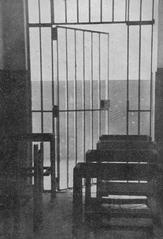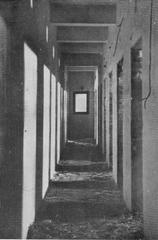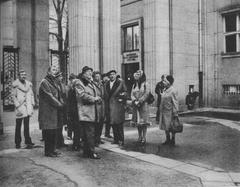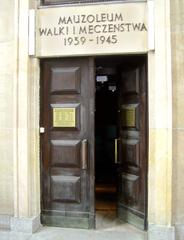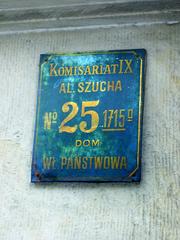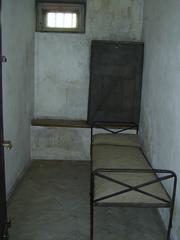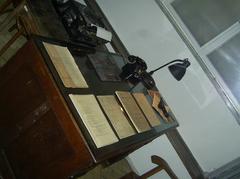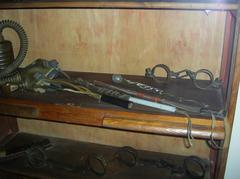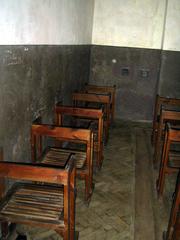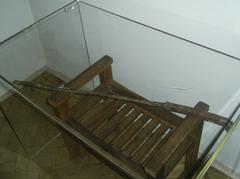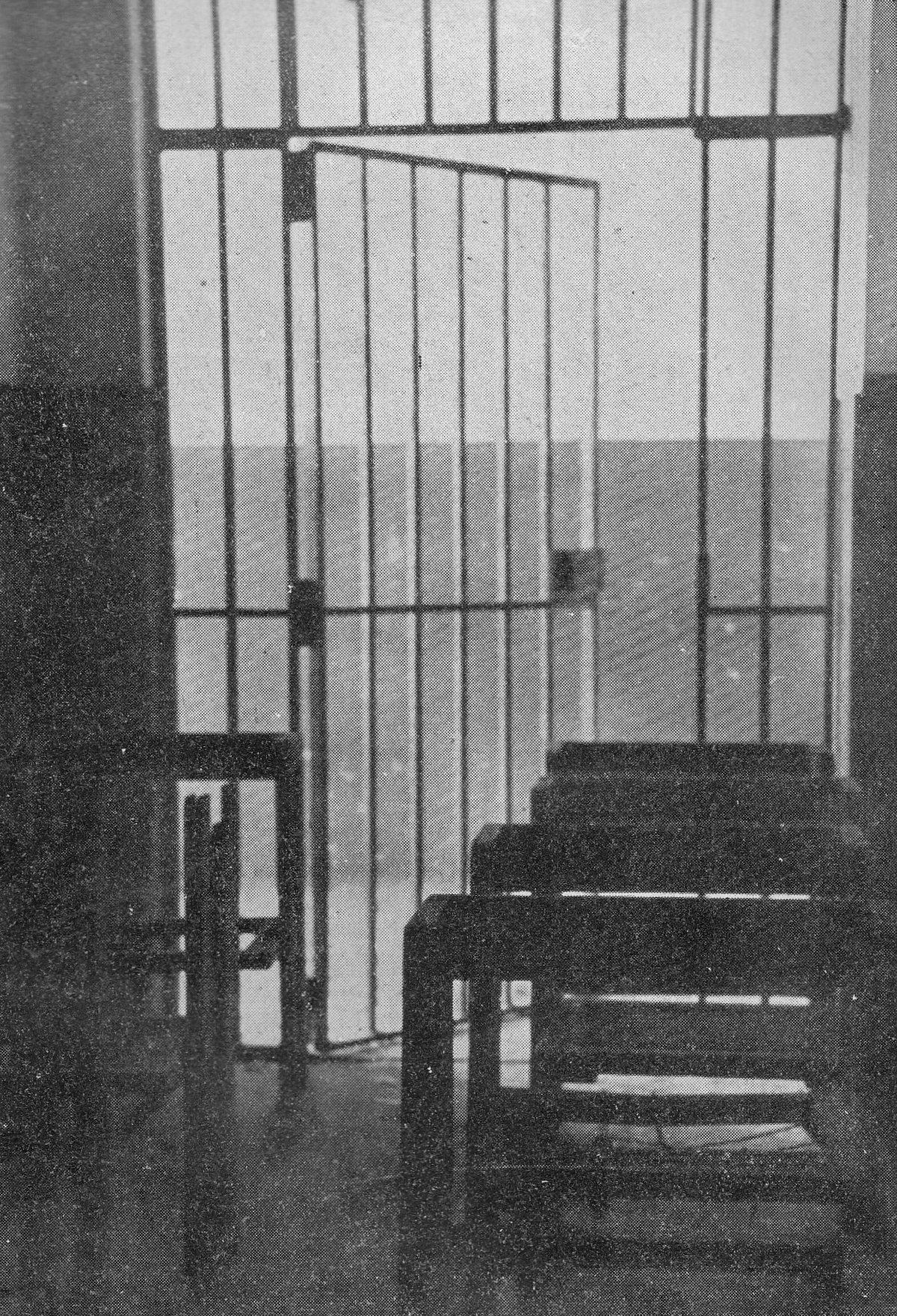
Mausoleum of Struggle and Martyrdom Visiting Hours, Tickets, and Warsaw Historical Sites Guide
Date: 15/06/2025
Introduction
The Mausoleum of Struggle and Martyrdom (Mauzoleum Walki i Męczeństwa) is one of Warsaw’s most poignant historical sites, commemorating the Polish men and women who suffered and resisted during the Nazi occupation in World War II. Located at 25 Aleja Jana Chrystiana Szucha, the site occupies the basement of the former Ministry of Religious Beliefs and Public Education—repurposed as the Gestapo headquarters during the war. Today, it stands as both a memorial and a museum, preserving original prison cells, interrogation rooms, and prisoners’ inscriptions, offering a deeply moving, educational experience.
This comprehensive guide provides essential information for visitors: historical background, opening hours, ticketing details, accessibility, transport options, and nearby attractions—helping you plan a respectful and meaningful visit to this essential Warsaw landmark.
For detailed historical records and up-to-date visitor information, consult the official museum website and Zapisy Terroru – Historical Archives.
Table of Contents
- Historical Background
- Visitor Information
- Exhibits and Facilities
- Nearby Attractions
- Travel Tips
- FAQ
- Conclusion
- References and External Links
Historical Background
Origins and Wartime Function
The Mausoleum of Struggle and Martyrdom is housed in a building originally constructed in 1930 as the Ministry of Religious Beliefs and Public Education. Following the Nazi occupation of Warsaw in 1939, the building was commandeered by the Sicherheitspolizei (Security Police) and Sicherheitsdienst (Security Service), becoming the Gestapo headquarters for the General Government (Wikiwand).
During the war, Szucha Avenue was closed to Polish civilians, underscoring the building’s grim purpose. The basement was converted into a prison and torture chamber, where thousands of resistance fighters, intellectuals, and civilians were brutally interrogated and detained, often following transfer from the notorious Pawiak prison (WhichMuseum). Survivor testimonies, such as those found on Zapisy Terroru, document the suffering and resilience of those held within.
After World War II, the site was preserved as a memorial and museum to honor the victims and educate future generations about Nazi atrocities.
Conditions and Atrocities
Prisoners at Szucha endured harsh conditions—overcrowding, psychological torture, and physical abuse. The original cells, corridors, and even graffiti scratched into the walls by prisoners have been preserved, providing visitors with a direct, authentic connection to the past. The museum’s exhibits and original architecture serve as powerful reminders of the brutality suffered and the courage shown by Polish resistance members.
Visitor Information
Visiting Hours
- Tuesday to Sunday: 10:00 AM – 5:00 PM
- Monday: Closed
- Closed on major public holidays: (e.g., New Year’s Day, Easter, All Saints’ Day, Christmas Day)
For the most current opening times or temporary changes, always check the official website.
Tickets and Admission
- Regular ticket: 10 PLN
- Reduced ticket (students, seniors): 5 PLN
- Children under 7: Free
- Free admission: Every Thursday
Tickets can be purchased at the entrance. Group visits (over 10 people) and guided tours should be booked in advance.
Getting There
The Mausoleum is centrally located in Warsaw’s Śródmieście district:
- Address: 25 Aleja Jana Chrystiana Szucha, Warsaw
- Metro: Politechnika (Line M1), about a 10-minute walk
- Tram/Bus: Plac Unii Lubelskiej stop (lines 4, 10, 14, 18)
- Parking: Limited street parking nearby; public transport is strongly advised (Warsaw Public Transport)
Accessibility
The main entrance is wheelchair accessible, but some historic basement areas remain challenging due to narrow corridors and original steps. Staff are available to assist, and visitors with special needs should contact the museum in advance (Accessibility Information).
- Printed materials in Braille or large print are available on request.
- Service animals are permitted.
Guided Tours and Educational Resources
- Guided tours: Available in Polish and English, lasting about 60 minutes. Advance booking is recommended, especially for groups (Book a Tour).
- Educational materials: Brochures and audio guides available in multiple languages. The museum also offers specialized programs for schools and educators.
Exhibits and Facilities
Key features of the museum include:
- Original Prison Cells: Preserved group and solitary cells, still bearing graffiti and inscriptions from prisoners.
- Interrogation Rooms: Displaying original furnishings and equipment used by the Gestapo.
- Memorial Hall: A contemplative space with photographs, documents, and personal effects dedicated to the memory of victims.
- Interpretive Panels and Multimedia: Bilingual information panels and multimedia displays provide historical context.
- Facilities: Restrooms and lockers (for bags/coats) are available. There is no café, but many restaurants are nearby.
Photography inside exhibition areas is generally prohibited to preserve the dignity and sensitive nature of the site. Exceptions can be made with prior permission for educational or press purposes (Photography Policy).
Nearby Attractions
Take advantage of the Mausoleum’s central location to visit other key Warsaw historical sites:
- Łazienki Park: A 15-minute walk; Warsaw’s largest park and home to palaces and the Chopin Monument (Łazienki Park).
- Ujazdowski Castle: Centre for Contemporary Art, north of the museum (Ujazdowski Castle).
- Pawiak Prison Museum: Focuses on the history of the notorious WWII prison.
- Warsaw Uprising Museum: Comprehensive exhibits on the 1944 uprising.
- POLIN Museum of the History of Polish Jews: A short tram ride away.
Numerous cafés, restaurants, and shops are within walking distance.
Travel Tips
- Plan for 60–90 minutes for your visit to fully absorb the exhibits.
- Wear comfortable shoes—the site includes uneven surfaces and subdued lighting.
- Maintain silence and a respectful demeanor, especially within the prison cells and memorial areas.
- Children under 14 must be accompanied by an adult, as some content may be distressing for younger visitors.
- Check the museum website for special exhibitions or commemorative events.
FAQ
Q: What are the opening hours of the Mausoleum of Struggle and Martyrdom?
A: Tuesday to Sunday, 10:00 AM – 5:00 PM. Closed on Mondays and public holidays.
Q: How much do tickets cost?
A: Regular tickets are 10 PLN, reduced tickets (students, seniors) are 5 PLN, children under 7 are free, and admission is free every Thursday.
Q: Is the museum suitable for children?
A: Children under 14 must be accompanied by an adult due to the sensitive nature of the exhibits.
Q: Are guided tours available in English?
A: Yes, in both Polish and English. Booking in advance is recommended.
Q: Is the museum wheelchair accessible?
A: The main entrance is accessible, though some historic areas may be difficult; contact staff for assistance.
Q: Can I take photographs inside?
A: Generally, photography is prohibited inside exhibition areas without prior permission.
Q: How long does a typical visit last?
A: Most visits take between 45 and 90 minutes.
Conclusion
A visit to the Mausoleum of Struggle and Martyrdom is a moving experience that honors the courage and resilience of the Polish people under Nazi occupation. By preserving authentic prison cells, interrogation rooms, and prisoners’ inscriptions, the site serves as both a memorial and a crucial educational resource. Take time to explore the exhibits, join a guided tour for deeper context, and complement your visit with nearby historic sites for a richer understanding of Warsaw’s wartime history.
For the latest information, always consult the official museum website. Enhance your visit by using resources like the Audiala app to discover more about Warsaw’s history.
References and External Links
- Mausoleum of Struggle and Martyrdom – Official Museum Website
- Zapisy Terroru – Historical Archives
- Wikiwand – Mausoleum of Struggle and Martyrdom
- WhichMuseum – Mausoleum of Struggle and Martyrdom
- Warsaw Public Transport
- Łazienki Park
- Ujazdowski Castle
- Polish Army Museum
